
Progress on Chemistry and Application of Chitin and its Derivatives
metrics 2024
Transforming Chitin Insights into Practical Solutions
Introduction
Progress on Chemistry and Application of Chitin and its Derivatives is an esteemed journal that focuses on the multifaceted aspects of chitin and its derivatives, showcasing pioneering research in the fields of Biochemistry and Organic Chemistry. Published by Polish Chitin Society and operating under an open access format, this journal aims to disseminate high-quality research findings and innovative applications related to chitin chemistry, promoting the exchange of knowledge among researchers, professionals, and students worldwide. With a commitment to advancing the understanding of biopolymer science, the journal has been active since 2012 and is recognized for its contributions to the field despite its current classification in the Q4 quartile for both categories. Researchers will find a platform that not only highlights the latest advancements but also integrates interdisciplinary approaches to explore the potential of chitin in diverse applications. For those interested in the chemistry and application of biopolymers, this journal represents an essential resource that promises to drive future innovations and collaborations in the field.
Metrics 2024
 0.17
0.17 0.80
0.80 0.70
0.70 14
14Metrics History
Rank 2024
Scopus
IF (Web Of Science)
JCI (Web Of Science)
Quartile History
Similar Journals

DOKLADY CHEMISTRY
Bridging theory and practice in the world of chemistry.DOKLADY CHEMISTRY is an esteemed academic journal published by MAIK NAUKA/INTERPERIODICA/SPRINGER, focusing on the dynamic field of chemistry. Established in 1996, this journal serves as a significant platform for disseminating cutting-edge research, reviews, and significant developments in various areas of chemistry, including but not limited to general and miscellaneous chemistry. Currently indexed with an ISSN of 0012-5008 and E-ISSN of 1608-3113, DOKLADY CHEMISTRY maintains a commitment to academic rigor and integrity, contributing critical insights to the scientific community. Despite its Q4 ranking in the 2023 Chemistry category and a Scopus rank of #314 out of 408, this journal remains an important resource for researchers, professionals, and students eager to explore emerging trends and innovative methodologies in the field. The journal operates under a model that supports comprehensive scholarly communication, making it a key fixture among established chemistry publications.

REVIEWS IN INORGANIC CHEMISTRY
Advancing the Frontiers of Inorganic ChemistryREVIEWS IN INORGANIC CHEMISTRY, published by Walter de Gruyter GmbH, is a distinguished academic journal that serves as a vital resource for researchers, professionals, and students within the field of inorganic chemistry. With its ISSN 0193-4929 and E-ISSN 2191-0227, this journal has made a significant impact on the discipline, holding a commendable Q2 ranking in the 2023 category of Inorganic Chemistry, placing it in the 81st percentile among its peers according to Scopus rankings. Continuously published since its inception, with converged years spanning from 1985 to 1990 and 1992 to 2024, it features comprehensive reviews encompassing the latest advancements, methodologies, and theoretical frameworks in the subject. Researchers will find IDEAL insights and valuable discussions that keep them abreast of trends and challenges in the domain, essential for driving innovation and collaboration. The journal’s commitment to quality and rigorous peer review highlights its importance in advancing inorganic chemistry research, making it an indispensable tool for academic excellence.
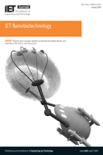
IET Nanobiotechnology
Advancing the Frontiers of Nanobiotechnology.IET Nanobiotechnology, published by WILEY-HINDAWI in the United Kingdom, is a leading journal dedicated to advancing the field of nanobiotechnology by exploring the interplay between nanotechnology and biological systems. With an impressive impact factor and a significant coverage in Scopus rankings, this journal occupies a pivotal position within the Q2 and Q3 quartiles across various relevant disciplines, including Biotechnology, Electrical and Electronic Engineering, and Nanoscience. Since its inception in 2007, the journal has showcased a diverse range of high-quality research that facilitates the development of innovative nanomaterials and their applications in medicine, biosensing, and bioengineering. Open access to its articles ensures that cutting-edge advancements are readily accessible to the global research community, fostering collaboration and knowledge sharing. As the field of nanobiotechnology continues to evolve, IET Nanobiotechnology remains a crucial resource for researchers, professionals, and students striving to shape the future of this interdisciplinary domain.

University Politehnica of Bucharest Scientific Bulletin Series B-Chemistry and Materials Science
Pioneering Research for Tomorrow's ChallengesUniversity Politehnica of Bucharest Scientific Bulletin Series B-Chemistry and Materials Science is a renowned academic journal published by POLYTECHNIC UNIV BUCHAREST, situated in Romania. With the ISSN 1454-2331, this journal serves as a dynamic platform for the dissemination of innovative research findings in the fields of chemistry and materials science. Although classified in the Q4 quartile of both Chemistry (miscellaneous) and Materials Science (miscellaneous) categories for 2023, it has made a significant impact by providing a venue for emerging scholars and established researchers alike to share their work. The journal seeks to bridge theoretical insights and practical applications, promoting interdisciplinary dialogue and advancing scientific understanding. The scope encompasses a broad range of topics, reflecting contemporary advancements and challenges within the field. To facilitate access to its articles, while it does not currently operate under an open-access model, the journal remains committed to enhancing visibility through digital libraries. With a publication history spanning from 1999 to 2024, the journal is vital for all stakeholders—researchers, professionals, and students—seeking to stay abreast of developments in chemistry and materials science.
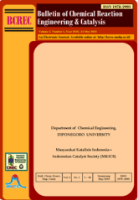
Bulletin of Chemical Reaction Engineering and Catalysis
Advancing the Frontiers of Chemical Engineering and CatalysisBulletin of Chemical Reaction Engineering and Catalysis is a distinguished open-access journal published by UNIV DIPONEGORO, focusing on pivotal advancements in the fields of chemical reaction engineering and catalysis. Since its inception in 2008, this journal has served as a vital platform for disseminating cutting-edge research, catering to a diverse readership that includes researchers, professionals, and students in chemical engineering and related disciplines. With its dedication to publishing valuable insights, the journal has been indexed in Scopus and boasts respectable rankings across various categories, including Q3 in Chemical Engineering (miscellaneous) and Q4 in Catalysis as of 2023. It continues to foster scholarly dialogue and collaboration by providing an accessible means for contributors to share their findings. Operating from Semarang, Indonesia, this journal underscores its commitment to advancing knowledge in chemical sciences, making it an essential resource for those engaged in the study and application of chemical processes.
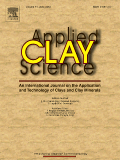
APPLIED CLAY SCIENCE
Exploring the Intersection of Geochemistry and GeologyAPPLIED CLAY SCIENCE, published by Elsevier, is a leading international journal dedicated to the dissemination of high-quality research in the fields of geochemistry, geology, soil science, and water science and technology. With its ISSN 0169-1317 and E-ISSN 1872-9053, this peer-reviewed journal has been an essential resource for researchers since its inception in 1985 and is set to continue its impactful journey through 2024. Recognized for its significant contributions, it proudly holds a Q1 ranking in multiple categories according to the latest assessments, including Geochemistry and Petrology, and Geology, ranking 5th and 10th respectively in Scopus. This journal serves as a vital platform for the advancement of knowledge surrounding clay science, exploring both fundamental and applied research that addresses contemporary challenges in environmental and geological sciences. Whether accessed via institutional subscriptions or individual purchase, APPLIED CLAY SCIENCE is dedicated to fostering an open dialogue among scientists, professionals, and educators in the discipline.
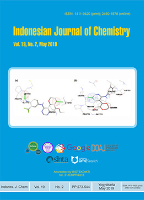
Indonesian Journal of Chemistry
Advancing Chemistry: Bridging Theory and PracticeIndonesian Journal of Chemistry (ISSN: 1411-9420), published by Gadjah Mada University, Department of Chemistry, is a premier platform for disseminating innovative research and advancements in the field of chemistry. Established as an Open Access journal since 2001, it promotes wide accessibility to high-quality scholarly articles, fostering collaboration and knowledge-sharing among researchers, professionals, and students in Indonesia and beyond. With an impact factor that places it in Q3 among miscellaneous chemistry journals and a Scopus ranking reflecting its emerging influence (Rank #248/408, 39th Percentile), the journal plays a significant role in enhancing the academic landscape of chemistry. Spanning diverse themes within the discipline, it invites contributions that bridge theoretical and practical aspects, thus contributing to the global conversation on chemical research and innovation. Located in Yogyakarta, Indonesia, the journal reflects a commitment to advancing scientific inquiry while addressing local and global challenges in chemistry.
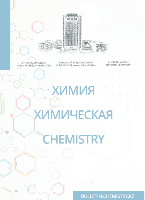
Chemical Bulletin of Kazakh National University
Connecting Minds: Chemistry Without BordersThe Chemical Bulletin of Kazakh National University is a prominent open-access journal dedicated to advancing the field of chemistry. Published by AL-FARABI KAZAKH NATIONAL UNIVERSITY, this journal serves as a vital platform for disseminating original research, reviews, and innovative findings in diverse areas of chemistry since its transition to open access in 2012. With an ISSN of 1563-0331 and an E-ISSN of 2312-7554, the journal aims to reach a global audience, fostering knowledge exchange among researchers, professionals, and students in the scientific community. The publication seeks to promote high-quality research that contributes to the understanding and application of chemical sciences, particularly in the context of Kazakhstan and the broader Central Asian region. Given the journal's commitment to making research freely accessible, it stands as an invaluable resource for anyone engaged in the study and application of chemistry.

Chemistry & Chemical Technology
Driving Collaboration in Chemical TechnologyChemistry & Chemical Technology is an esteemed academic journal published by LVIV POLYTECH NATL UNIV, specializing in the interdisciplinary intersections of chemistry and engineering. With its ISSN 1996-4196, this journal has become a significant platform, contributing to advancements and discussions within the fields of Chemical Engineering and Chemistry, as evidenced by its rankings in the 2023 category quartiles, where it is placed in Q3 for both disciplines. The journal aims to disseminate high-quality research articles, studies, and reviews from 2012 to 2024, welcoming contributions from researchers and professionals keen on driving innovation and fostering collaboration in the chemical sciences. As an open-access journal based in Ukraine, it has established a reputation for accessibility, providing comprehensive insights and a global perspective on the latest developments. Engaging with this journal not only enhances your understanding of current trends but also contributes to the global body of knowledge in chemical technology.
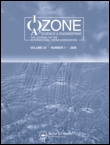
OZONE-SCIENCE & ENGINEERING
Fostering Collaboration in Ozone Research and Engineering PracticesOZONE-SCIENCE & ENGINEERING, published by TAYLOR & FRANCIS INC, is a pivotal journal dedicated to advancing research in the field of environmental science, focusing on the properties, measurement, and application of ozone in various engineering contexts. With an ISSN of 0191-9512 and an E-ISSN of 1547-6545, this journal has been an authoritative source since its inception in 1979 and continues to publish valuable insights until 2024. Featuring a respectable impact factor and well-regarded Scopus rankings—ranking 64 out of 197 in Environmental Engineering and 64 out of 147 in Environmental Chemistry—OZONE-SCIENCE & ENGINEERING holds significant relevance in the academic community. The journal’s classification into Q3 for Environmental Chemistry and Q2 for Environmental Engineering underlines its contributors' commitment to facilitating innovative research and dialogue among scientists, practitioners, and students alike. Although not an open-access journal, readers can access a wealth of rigorously peer-reviewed articles that aim to address both contemporary challenges and advancements in ozone science. By disseminating high-quality research, this journal plays a crucial role in shaping environmental policies and practices worldwide.